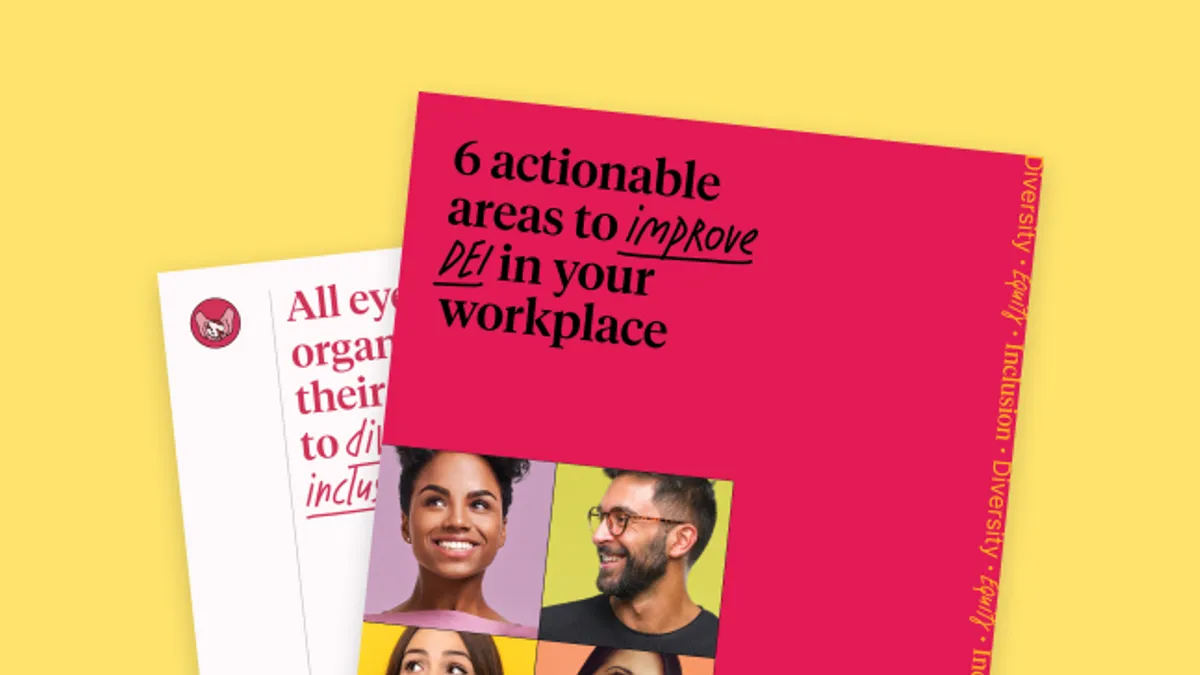When it comes to diversity, equity, and inclusion (DEI) in the workplace, more companies are using surveys as a way to collect employee sentiment data and measure how they're doing. However, the question many companies are facing is how to interpret this data, and what to do next.
At a panel event, Culture Amp spoke with four company leaders passionate about DEI:
- Lauren Williams, Senior Manager of Vertical Marketing at Pandora
- Dr. Stephanie Royal, (previous) Executive Director of Workforce Partnerships at LaGuardia Community College
- Nithya Das, (previous) SVP General Counsel at AppNexus
- Brandon Atkinson, (previous) Chief People Officer at AppNexus
In this article, we'll share learnings from these industry thought leaders to help your team start turning DEI data into action.
DEI data helps inform meaningful action
Employee engagement surveys can help organizations begin to understand employee sentiment around everything from workplace culture to manager effectiveness. This data provides a clear and measurable way for people teams to measure traditionally hard-to-quantify drivers of engagement like DEI.
However, it's important to note that the results may not be as positive as you might hope – especially if you're just getting started on your DEI journey. Dr. Royal says, "The data demands that you have courage in assessing where you are with your diversity and inclusion efforts. Looking at the data holistically is one thing, but then you need to take a deep dive to see what the numbers really show." She suggests asking questions about diversity at different levels of the business (such as from entry to senior level) to uncover insights about discrepancies between various employee groups.
Beyond surveys, it's important to dig deeper into other diversity metrics. "If there's a company that says, 'We've got 40% people of color at our firm,' but 80% of those people of color are in administrative roles or lower-level roles, that's not successful," Dr. Royal explains. Looking beyond surface-level diversity metrics will help uncover high-impact opportunities for improvement.
Leadership buy-in is key to driving change
All panelists highlighted leadership buy-in as essential to building an inclusive company. According to Brandon, "Getting executive buy-in and spending is a precursor for any program to have an effect." Nithya added that AppNexus CEO Brian O'Kelly is a big advocate for diversity and inclusion. "He's usually the one who's pushing us to do more. He's always pushing both Brandon and myself to make it more of a priority, take it further. When you have that coming from somebody with privilege, it's pretty meaningful," she says.
Employee groups are champions for diversity
While leadership buy-in is imperative for DEI initiatives to take off, individual employee adoption is key to the long-term success of these initiatives. As an individual contributor, Lauren sees herself in a unique position to raise awareness about DEI. While her role isn't formally to oversee diversity and inclusion programs, she sits on the steering committee for Pandora Mixtape, one of Pandora's employee resource groups.
"Not only is this group a place where people of color can gather and feel safe, but it is also a way for us to put our voice out into Pandora. That way, they know that we are here, and they know that we want to make this company the best that it can be," she says. Leaders of these steering committees act as advocates for their communities and regularly speak with members of the leadership team.
Do we need to say, 'Diversity is good for business?'
Unsurprisingly, all panelists agreed that DEI is important to both business and individual success. But business success (while a nice value-add) should not be the primary reason for companies to prioritize DEI. Dr. Royal explained that allies are the people who need to create a safe space for dialogue about diversity. "It says a lot for that ally to be having that conversation. I think the deeper that individuals can dive into diversity, the better that individual will be, and their leadership, and that's going to endure to the company itself," she says.
Turn your commitment to DEI into action. Download Culture Amp's latest eBook to learn six high-impact areas to address when embarking on your DEI journey.










